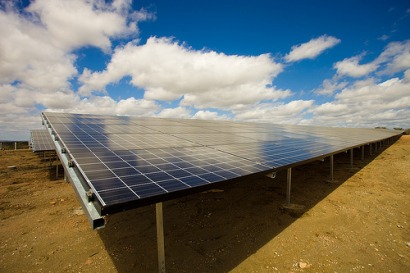
A new study entitled “Solar Photovoltaics Competing in the Energy Sector – On The Road to Competitiveness” has be released today in Hamburg, at the 8th EU PV Industry Summit, part of the 26th European Photovoltaic Solar Energy Conference and Exhibition (26th EU PVSEC).
The study finds that PV technology has shown impressive price reductions over the last 20 years, with the price of PV modules decreasing by over 20% every time the cumulative sold volume of PV modules has doubled. Importantly, there is a huge potential for further generation cost decline: around 50% until 2020.
The new EPIA report compares the real cost of PV electricity generation to that of other energy sources over the coming decade, and finds that under the right conditions PV can be competitive across Europe by 2020.
“Already today, PV electricity is cheaper than many people think,” said EPIA President Ingmar Wilhelm. “In the coming years it is going to get even cheaper thanks to ever-improving technology and economies of scale. As also the price of electricity from conventional sources increases, solar PV will be become a fully competitive part of the energy mix.”
Grid parity no longer a distant goal
EPIA’s extensive analysis of five markets (France, Germany, Italy, Spain and the United Kingdom), carried out with the support of the strategic consulting firm A.T. Kearney, shines new light on the evolution of Europe’s future energy mix and PV’s role in it. It shows that under the right regulatory and market conditions, PV electricity can reach full competitiveness with conventional power sources across Europe by the end of this decade.
By determining the full generation cost of PV electricity and comparing it to market trends over the coming decade, the study reaches the following conclusions:
- Dynamic grid parity – the point at which, in a particular market segment in a specific country, the present value of the long-term electricity revenues from a PV installation equals the long-term cost of receiving traditionally produced and supplied power over the grid – could occur as early as 2013 in the commercial segment in Italy and then spread out in Europe to reach all types of installations considered in all the selected countries by 2020.
- Generation value competitiveness – the point at which, in a specific country, adding PV to the generation portfolio becomes equally attractive from an investor’s point of view to investing in a traditional and normally fossil-fuel based technology – could be reached as early as 2014 in the ground-mounted segment in Italy and then spread out in Europe to all the selected countries by 2020.
“Achieving PV competitiveness across Europe will, however, require political commitment to regulatory frameworks that support development of the technology and removal of market distortions,” warns EPIA, explaining that the smart deployment of support mechanisms, such as deed-in tariffs (FiTs), has helped PV gain a market foothold in many countries of the world, compensating for the difference in cost competitiveness between PV electricity and that of conventional sources. As that competitiveness gap narrows for the PV sector, due to technology development and parallel decrease of generation cost, PV will be able to rely progressively less on dedicated financial support, leading to the phasing out of such support schemes. This will happen even quicker if internalisation of external effects is implemented for all technologies and subsidies to other energy sources are also phased out, leading to a truly level playing field.
“Switching to solar photovoltaic electricity is not just a desirable option for achieving our energy and environmental goals,” said Mr. Wilhelm, “it is also a realistic and competitive one. By creating the right conditions now for the development of PV, we can ensure that it fulfils its promise as a clean, safe and infinitely renewable energy source and a major part of Europe’s energy mix.”
For additional information:

